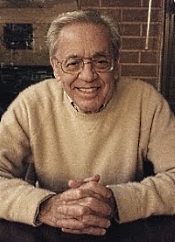by Karl Nehring
Wonderland. Makiko Kinoshita: Ashita no uta; Ligeti: Nonsense Madrigals: I. Two Dreams and Little Bat; Gjeilo: A Dream within a Dream; Ligeti: Nonsense Madrigals: II. Cuckoo in the Pear-Tree; Francesca Amewudah-Rivers: Alive; Ligeti: Nonsense Madrigals: III. The Alphabet; Joe Hisaishi: I was there; Ligeti: Nonsense Madrigals: IV. Flying Robert; Judith Bingham: Tricksters; Ligeti: Nonsense Madrigals: V. The Lobster Quadrille; Malcolm Williamson: The Musicians of Bremen; Ligeti: Nonsense Madrigals: VI. A Long, Sad Tale; Paul Patterson: Time Piece. The King's Singers. Signum Classics SGCD739
The King’s Singers is one of those British musical groups that just seem to have been around forever, kind of like the Rolling Stones. Unlike Jagger and company, however, they don’t look or sound like a bunch of withered old men: they have obviously changed members over the years. Their website (which you can find here) is full of useful information about the group, including an account of their origin: “People often ask us where our name comes from, and the answer is from King's College, Cambridge. The original six members of The King's Singers were all choral scholars at King's College, part of Cambridge University. They first recorded in 1965, under the not-so-catchy name 'Schola Cantorum Pro Musica Profana in Cantabridgiense'. This recording put the group into the consciousness of the famous conductor Sir Neville Marriner, who in August 1966, invited them to perform in concert. Several more concerts followed, under the name 'Six Choral Scholars of King's College, Cambridge', before, on 1st May 1968, the group made its London debut in another of Neville Marriner's concerts, this time under another new name: The King's Singers.” The current lineup that performs on this release comprises Patrick Dunachie, first countertenor; Edward Button, second countertenor; Julian Gregory, tenor; Christopher Bruerton, first baritone; Nick Ashby, second baritone; Jonathan Howard, bass.
The music on Wonderland features compositions commissioned by the ensemble over its 55-year history, highlighted by the six Nonsense Madrigals by the late Hungarian composer György Ligeti. In addition, to honor Ligeti’s 100th birthday in 2023, The King’s Singers commissioned six sets of cartoons, each of which has since been turned into a music video by illustrator Coralie Muce, to accompany the six Nonsense Madrigals. A QR code included in the CD booklet provides a link to these colorful videos for those who might be interested in seeing them. The booklet also includes lyrics for all of the works on the album along with background information on the history of the ensemble. The music itself is varied, although there are threads that bind the album together. For example, woven throughout the Nonsense Madrigals is the fairytale The Musicians of Bremen, which has been set to music by the Australian composer and Master of the Queen's Music Malcolm Williamson, a piece that was premiered by The King’s Singers in 1972. Ola Gjeilo's A Dream within a Dream, which questions the very nature of perception and reality, sets the stage for much of the music on the album, which is replete with lyrics that blur the line between the real and the imaginary: Paul Patterson’s Time Piece tells an eccentric alternative creation story (1972); and Judith Bingham’s Tricksters imagines what could happen if pranksters from different world mythologies came together for the first time.
The recorded sound of the voices is flawless. The only potential negative aspect of this release is that the voices sound so similar from song to song. I can imagine some listeners just finding that sound to be too much of a good thing. Other listeners will love every moment of it. The King’s Singers are a world-class vocal ensemble, and Signum has done a remarkable job in putting this thoughtfully crafted package together. A remarkable release.
Seven Psalms. Paul Simon. The Lord; Love Is Like a Braid; My Professional Opinion; Your Forgiveness; Trail of Volcanoes; The Sacred Harp; Wait. Paul Simon, Vocals, Harmonica, Bells, Chromelodeon, Cloud Chamber Bowls, Dobro, Frame Drum, Gamelan, Glockenspiel, Gong, Gopichan, Guitars, Harmonium, Keyboards, Percussion, Talking Drum; Nadia Sirota, Viola;
Alexandra Sopp, Flute; Nina Stern, Chalumeau. Edie Brickell, vocals; Voces8, vocals. Owl Records 19658779112
Seven Psalms is unlike any Paul Simon album that you have ever heard. You won’t hear anything upbeat like “Kodachrome,” and no, Paul is no longer heading to Graceland in Memphis, Tennessee, where he once felt sure to be received. Older now, and losing his hearing, he has other things on his mind, as evidenced by lyrics that begin: “I've been thinking about the great migration / Noon and night they leave the flock / And I imagine their destination / Meadow grass, jagged rock / The Lord is my engineer / The Lord is the earth I ride on / The Lord is the face in the atmosphere / The path I slip and I slide on.” Shortly thereafter he sings, “The Covid virus is the Lord / The Lord is the ocean rising / The Lord is a terrible swift sword / A simple truth surviving.” As the music continues in an unbroken stream, Simon’s musings turn inward as he contemplates his own mortality.


































